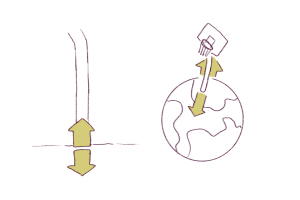What force propels players as they run across the court? How can a ball accelerating downwards bounce back up? When a shot is blocked, why does the ball rebound off the player’s arm? The answer is that every force is paired with an equal opposing force.
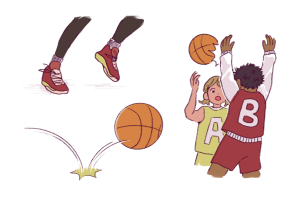
From gravity to contact forces, every force you observe has a pair in the opposite direction, as explained in Newton’s 3rd law of motion. This can be written as Force 1 = -(Force 2), with the negative sign implying that Force 2 occurs in the opposite direction of Force 1. Applying Newton’s 2nd Law of motion gives us mass 1 • velocity 1 = mass 2 • -velocity 2.
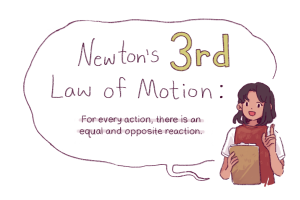
Newton’s third law of motion: for every action, there is an equal and opposite reaction.

Because of Newton’s 3rd law of motion, we can reliably predict the motion of certain objects. For example, when a basketball is dribbled, it will hit the ground with a force. This force of the ball on the ground is paired with the force of the ground on the ball. This second force acts in the opposite direction, so the ball is propelled upwards.
This relationship is important for many aspects of motion. Besides knowing the direction and acceleration of reactive motions, it also has implications for energy, the conservation of momentum. These concepts are beyond the scope of this walkthrough, but they are important aspects of motion in everyday life.

One way you can observe the 3rd law is by pressing your hand against a surface. Your hand applies a force to that surface. If the 3rd law did not exist, you would not be able to feel any effect from oppositional forces. However, you can observe the reaction force (the force of the surface on your hand) in the pressure you feel and the way your hand presses against the surface.
A person throws a ball into the hoop. In each labelled part of the motion, what force pairs are present?
This is an accordion element with a series of buttons that open and close related content panels.
1.
Pair 1: the force of the ground on the person/the force of the person on the ground
Pair 2: the force of the person on the Earth/the force of the Earth on the person (their weight; present even when the person is not in contact with the ground)

2.
Pair 1: the force of the ball on the Earth/the force of the Earth on the ball (its weight)
Pair 2: force of the air on the ball/force of the ball on the air
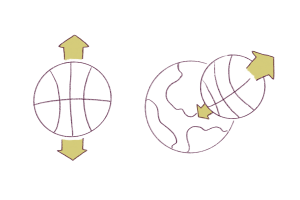
3.
Pair 1: the force of the ball on the hoop/the force of the hoop on the ball
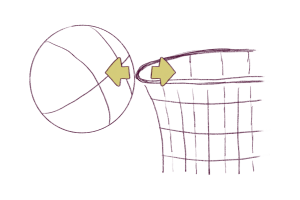
4.
Pair 1: the force of the basketball hoop on the Earth/the force of the Earth on the basketball hoop (its weight)
Pair 2: the force of the basketball hoop on the ground/the ground on the basketball hoop
